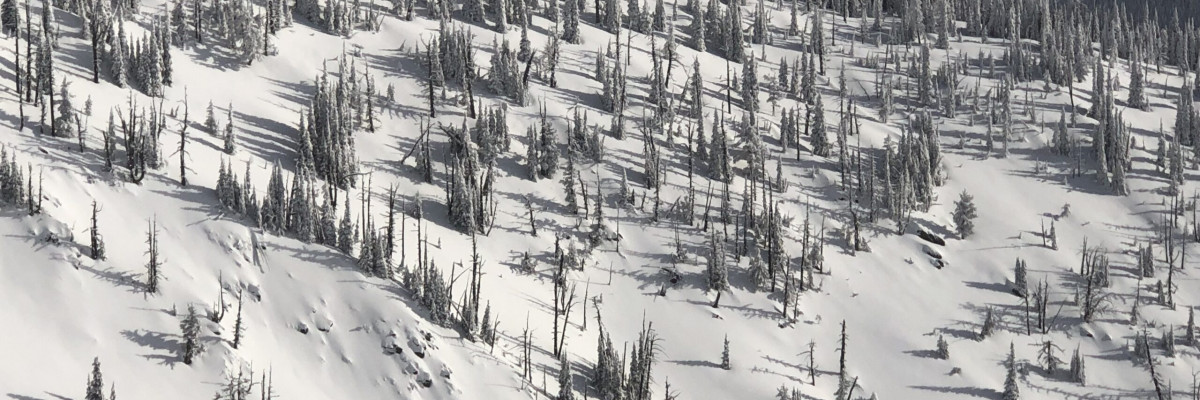The current avalanche danger for the West Central Montana backcountry is Low. Low danger does not mean no danger! Be on the lookout for avalanches in isolated or extreme terrain.
Good morning, this is Logan King with the West Central Montana Avalanche Center’s avalanche advisory for Thursday, February 7th, 2019. This danger rating does not apply to operating ski areas, expires at midnight tonight and is the sole responsibility of the U.S. Forest Service.
Weather and Snowpack
Mountain temperatures this morning range from -11 to 5 degrees Fahrenheit. Winds are light out of the SW at 4 mph with gust of 6 mph. During the day yesterday the area received another 1-3 inches of new snow. Overnight mountain locations picked up a trace to an inch of new low density snow.
The most widespread problem today will be loose snow avalanches. Light and dry surface snow is moving readily throughout the advisory area. These avalanches are small and generally don’t pack much of a punch but can be dangerous if terrain traps are present. Look for cliffs, trees, gullies and anything that may increase the consequences of getting knocked off your feet or sled before committing to steep terrain.
The next problem to be aware of today are wind slabs. Lots of snow is available for transport but winds have been isolated or light. Small wind slabs are primarily confined to isolated slopes and tend to be small and soft. Winds have been erratic and blown snow back and forth over ridges so cross loading will be a problem and locations of wind slabs may be hard to identify. Carefully look for signs of wind loading before traveling in avalanche terrain.
Another problem to be on the look out for are persistent slabs. Buried surface hoar can still be found in the forecast area but is increasingly isolated and continues to gain strength. Facets near the ground are unlikely to be triggered at this point but would result in large avalanches so should be considered before venturing into big terrain. At lower elevations the new snow is bonding well with the crusts and continues to gain strength. Dig a pit to determine if these layers are present and adjust travel plans accordingly.
Big Picture: The avalanche danger continues to trend downward and is rated at low. I will say it again; Low danger does not mean no danger! It is a stout low right now and avalanches are possible if you are in the wrong place at the wrong time. Carefully evaluate the likelihood and potential consequences of avalanches before committing to avalanche terrain. Don’t treat the low rating as a green light and jump straight into big terrain, start on smaller slopes with lower consequences and test the snow before going for a big line. Stay aware of changing conditions and continue to utilize safe travel protocols and don’t but lulled into complacency.
Avalanche and Weather Outlook
Cold will dominate the region today before a small disturbance develops Friday (forecast). Another system looks to set up over the weekend that will be reminiscent of last weekends system. Cold and snow showers will continue for the next few days. The avalanche danger will remain the same unless wind loading increases or an area picks up a significant load of new snow.
As always, if you make it out, please, feel free to share, what you find on our public observations page.
Ski and ride safe.














